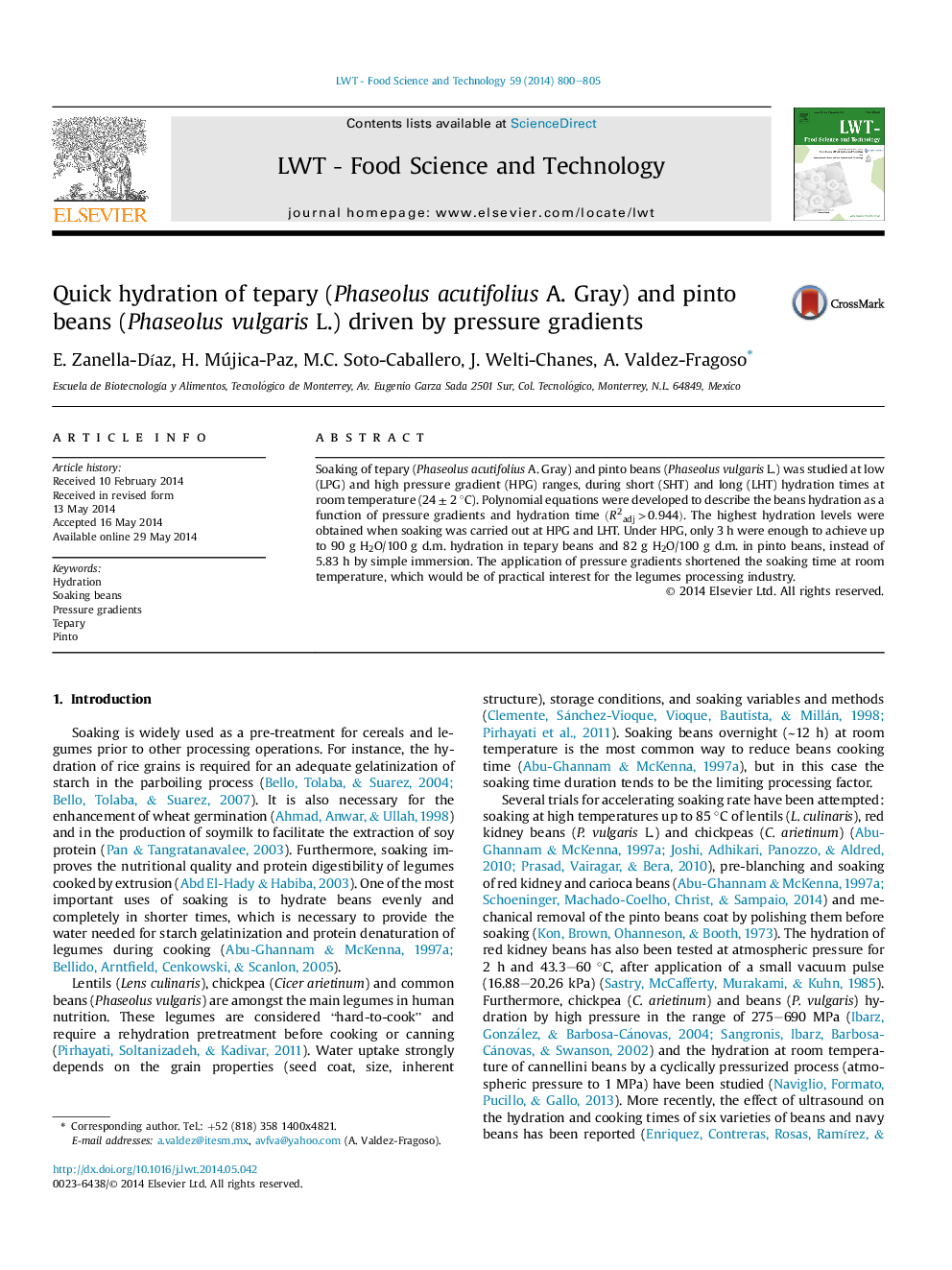| Article ID | Journal | Published Year | Pages | File Type |
|---|---|---|---|---|
| 6402571 | LWT - Food Science and Technology | 2014 | 6 Pages |
â¢Hydration of pinto and tepary beans was performed using pressure gradients at room temperature.â¢The developed soaking process was significantly faster than the simple soaking by immersion at atmospheric pressure.â¢The high efficiency of this process could be advantageous for the bean processing industry.â¢The studied process appears as a good alternative for fast hydration, not only of legumes, but also of other grains.
Soaking of tepary (Phaseolus acutifolius A. Gray) and pinto beans (Phaseolus vulgaris L.) was studied at low (LPG) and high pressure gradient (HPG) ranges, during short (SHT) and long (LHT) hydration times at room temperature (24 ± 2 °C). Polynomial equations were developed to describe the beans hydration as a function of pressure gradients and hydration time (R2adj>0.944). The highest hydration levels were obtained when soaking was carried out at HPG and LHT. Under HPG, only 3 h were enough to achieve up to 90 g H2O/100 g d.m. hydration in tepary beans and 82 g H2O/100 g d.m. in pinto beans, instead of 5.83 h by simple immersion. The application of pressure gradients shortened the soaking time at room temperature, which would be of practical interest for the legumes processing industry.
